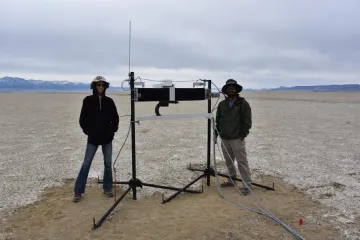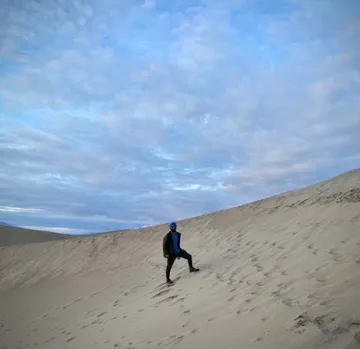Another Wavelength: Rantaj Singh

This month in Another Wavelength, we chat with B.S. student Rantaj Singh. Rantaj is currently enrolled in the Accelerated Master's Program and mentored by Nik Anderson.
Where are you from?
Gilbert, AZ
What brought you to study optics?
Growing up I enjoyed understanding how things worked, taking things apart, and building things back up. When I got to University of Arizona, I was leaning towards Mechanical Engineering, but my heart really wasn’t in it. I wanted to go into a field that was unique and different, one that only a few people pursued, one that brought together science and engineering in a progressive and groundbreaking way. I started looking at other engineering disciplines, Aerospace, Chemical, luckily, I stumbled into the Optical Engineering because it checked all my boxes and four years later, I have enjoyed every moment.
Who is your hero in science?
My hero in science would have to be Isaac Newton. Isaac Newton contributed so much in understanding the fundamentals of the world we live in from Gravitation Laws to Laws of Motion to Optics that his impact on the field is felt in every facet of science. This is exactly why he is my hero, my goal in science is to leave an everlasting impact on the field the same way Newton did.
Describe your research in 20 words or fewer.
I am with the Remote Sensing Group (RSG) and our research focuses on ground-based vicarious calibrations of spaceborne and airborne sensors.

Describe your research in 200 words or fewer.
The majority of my research with RSG has dealt with the group’s ground viewing radiometers (GVR). The GVR is our deployable stationary radiometer that collects radiance data in a multispectral form at the group’s off campus research site. The data taken from the GVR is sent through a radiative transfer code and compared to data being read by an inflight sensor. My project centered around transitioning the stationary GVR into a one that had autonomous linear motion capabilities. The purpose of incorporating a motion aspect to the GVR system was to gather more data off the scene/floor in order to get a better representation of the site, using one GVR versus deploying multiple stationary GVRs. In March of 2020, the group was able to deploy the system and it has been functioning since.
My current research project revolves around developing a micro-spectrometer system that can also be deployed into the field to collect radiance data. The implementation of the spectrometer will allow for hyperspectral data to be taken along with the current multispectral GVR system.
Name three neat facts about you.
- I enjoy woodworking.
- I like to go hiking whenever I can.
- I love playing and watching basketball.
Research Caption (above): GVR23 RadCaTS Remote Sensing Group, Railroad Valley, Nevada.
Image Caption (right): Hiking in Death Valley National Park, California

